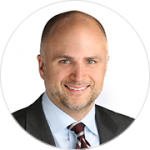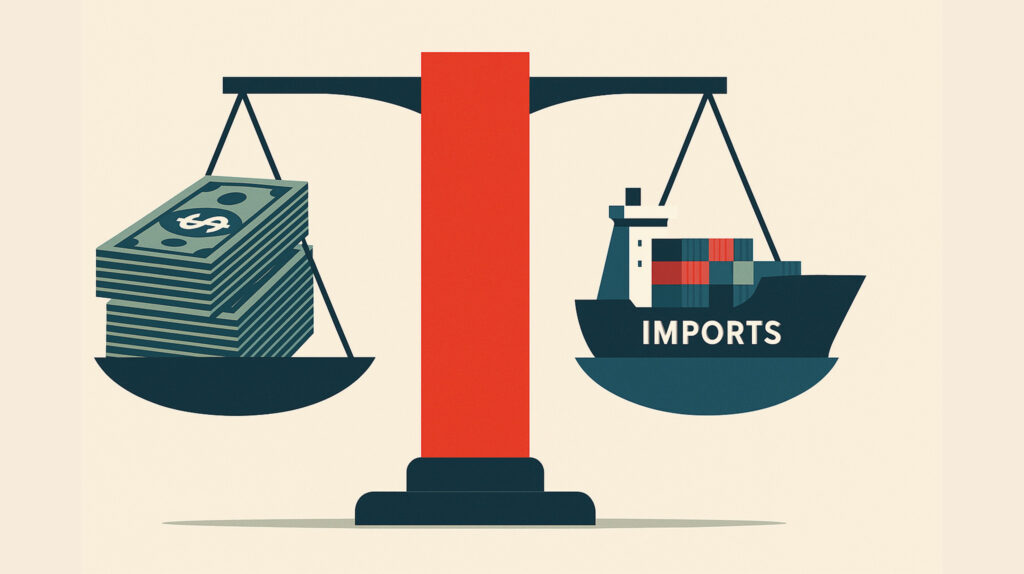Politicians like to pick and choose their economic schools of thought to justify their policy and spending decisions. Elected liberals like to point to the Keynesian effects of government spending, whereby each dollar inserted into the economy drives multiples of that value in growth. Conservative officials often use the Austrian theories, which posit that free markets must be left unfettered so that capital can flow to its most beneficial use, with the government simply enforcing contracts and laws around trade. Donald Trump and his advisors seem to be pushing a view that aligns with some of the earliest American ideas. Specifically, the use of tariffs as a funding mechanism and a tool to drive sovereign interests. Let us dive into the different schools to compare the current approach.
Austrian School
Carl Menger, author of “Principles of Economics” in 1871, is considered the founder of the Austrian school of economics. His idea is that various people view the worth of disparate items differently. Thus, what is important to one person might not hold any worth to another individual. Additionally, as one accumulates assets, each additional unit would be valued less to them than the previous one. Ludwig von Mises applied this thought to money, which gives rise to the current debate on how much “millionaires and billionaires” actually need. Clearly, each additional dollar earned by Elon Musk does little to change his lifestyle, but for an hourly worker struggling to make ends meet, that same dollar is sacred. This sets up an important principle for supply and demand. Unlike previous theories, which simply looked at the cost of production to determine a good’s value, this new idea asserted that subjective individual preferences drive value. We see this with Bitcoin, which is driven by perceived scarcity, establishing it as a store of wealth.
The effects of money creation on inflation are perhaps their most relevant contribution to recent history. Friedrich Hayek and others believed that printing a currency without a similar rise in the production of goods and services would yield higher prices. When the government controls interest rates to affect the economy, it causes a misallocation of resources that must be corrected. This occurs through a recession, which clears out unproductive uses and redirects them. Naturally, without this influence, money would flow to the products people valued most. Tariffs and taxes provide a similar misallocation. Austrian economists believe in comparative advantage, which means that some producers create more efficiently than others and can thus sell at a lower price. When sellers generate the wares they fabricate the most cost-effectively, everyone benefits. Free trade supports this process, which is why we see cheap products from China, where labor costs are low. Service sales come primarily from the US, where knowledge is key, commanding higher salaries.
Keynesian School
Pioneered by John Maynard Keynes, Keynesian economics seems to be the most popular amongst government officials in the 21st century. It posits that a country’s fiscal intervention in markets can stabilize and strengthen them. This theory, introduced during the Great Depression, believed that supporting demand could overcome undue pessimism and revive the economy. Unlike the Austrians, the printing of money is seen as a boon to the economy to help sidestep recessions and support full employment. COVID is a vivid example of this, which, admittedly, worked to soften the loss of millions of jobs overnight, but as predicted (by Hayek), caused inflation. Unlike modern progressives, Keynes believed in low taxes because the more money available to deploy, the greater the economic vitality.
This idea of maximum outlays is often called the “Keynesian Multiplier,” which believes that spending begets spending. As consumers buy, businesses can disburse more wages, purchase more equipment and materials, and ultimately pay higher salaries. This allows more purchasing, and the cycle continues. A criticism of this idea is that it does not distinguish between needed allocations and unnecessary ones. Money injected is valuable even if it is spent digging a ditch, filling it in, and then re-digging it. Paul Krugman is the most famous economist who espouses this theory, as he argues for ever-higher stimulus packages and believes they only fail because they were too small.
Krugman on stimulus
Chicago School
Modern conservatives pull heavily from the Chicago school of economics. Popularized by Milton Friedman and continued in the present day with Thomas Sowell, they believe that rational people act in their own self-interest. This makes them carefully consider how they spend their resources, providing price signals to the market. Friedman describes this concept using the making of a pencil and the various actors involved in the famous video below. Companies do the same, choosing where to deploy capital.
Friedman talks about how economies work using a pencil.
Unlike Keynes above, Friedman believed Federal Reserve policies caused the Great Depression. His development of the concept of monetarism states that the money supply is the primary driver of economic growth. By increasing it at a steady and predictable rate, inflation would be avoided or significantly reduced.
The Fed was largely responsible for converting what might have been a garden-variety recession, although perhaps a fairly severe one, into a major catastrophe. Instead of using its powers to offset the depression, it presided over a decline in the quantity of money by one-third from 1929 to 1933 … Far from the depression being a failure of the free-enterprise system, it was a tragic failure of government.
— Milton Friedman, Two Lucky People
Friedman on inflation
Lastly, deregulation and free trade were hallmarks of the Chicago school. So much so that even retaliatory tariffs were frowned upon as the efficient movement of goods with minimal interference was stressed. A data-driven approach to these theories sets these economists apart and continues to be applied even in non-economic situations. The best example of this is the best-selling novel Freakonomics, by Chicago economist Steven Levitt. He tackles subjects including whether real estate agents strive to get their customers the best price (spoiler: they don’t) and the economic patterns of naming children.
Trumpian School
Much to the dismay of the world powers, the new Trump administration is using tariffs in much the same way that Alexander Hamilton applied them in the nascent years of the United States. Hamilton strove to protect early American industry, reduce dependence on imports, and raise revenue to fund government and pay off Revolutionary War debts with this method. Contrary to modern conservative thinking, as espoused by the Chicago and Austrian economic schools, it also runs against Keynesian principles (though not as much), which believe wholeheartedly in unfettered free trade. Unlike Hamilton’s time, industries in the United States are well established now. Trump, however, would like to re-shore industries, particularly in manufacturing, and sees this as a path to that goal. He argues that tariff revenue could eliminate the income tax, encourage free trade, and restore the balance of imports and exports.
Importantly, trade deficits drive demand for the US dollar but also encourage exporters to devalue their currency relative to ours. If confidence wanes in the strength of the USD, serious ramifications for the worldwide economy could occur. Persistent imbalances exacerbate this problem. By aiming to level these payments, we potentially protect the value of the dollar and reduce the need to sell treasuries to foreign holders. As the world’s reserve currency, we avoid serious implications with the current situation but open ourselves up to risk. It remains to be seen if economic team members such as Scott Bessent will be seen in the future as visionaries or the cause of unnecessary mayhem in markets that show little benefit.
Editorialists will deem the current policies a success or failure depending on which side of the aisle they cheer for politically. The data-driven rigor of the Chicago school will ultimately be the true judge of the tariff binge that characterizes the beginning of the second Trump term. Thaws in the China relationship sent the market back to green for the year in May, already shocking some naysayers. The complexity of large economies dictates that each school of thought should be considered depending on the situation. Let’s hope Trump picked the right path for now.
Illustration created by the author using OpenAI DALL·E (2025).

